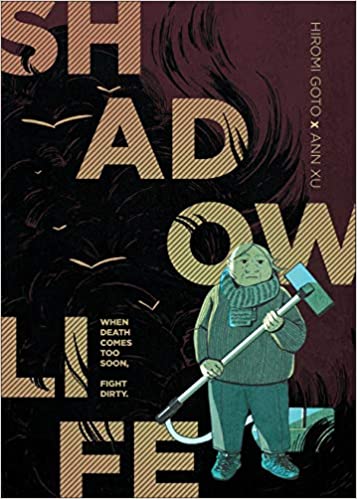Amazon Affiliate Link | Bookshop.org Affiliate Link
Kumiko, a 76-year-old widow, leaves the assisted living facility her adult daughters put her in because it just wasn’t for her. She wants to maintain whatever independence she can for as long as she can. She feels death coming for her, but it’s too soon. So, when death’s shadow tries to take her before her time, Kumiko fights back.
It’s so refreshing to see an older bisexual character. I have not come across many older characters in general, let alone queer ones, but maybe I’m not reading the right books. Regardless, Kumiko is a delightful main character. She’s quirky and saucy in a way that you can see how she charms some people and irritates others.
The story focuses mostly on Kumiko’s battle with the shadow of Death that has come to take her away. But threaded throughout you also get a glimpse of her relationship with her daughters in the present and flashbacks of her time with her husband, who died in a car accident. For anyone who’s dealt with being a caretaker of an older parent or grandparent, it’s easy to understand the daughters’ perspective, seeing how easily frustrated she is by Kumiko. But in telling the story from Kumiko’s point of view, Goto brings a lot of empathy for the parent’s point of view. Kumiko simply wants to live her life, even if she will start needing more help and supervision soon.
As Kumiko battles Death’s shadow, we get a fun cast of characters that include a surly vacuum storekeeper and her sweet neighbor that looks out for her. She is also reunited with her old flame, Alice. It’s here that the story reveals her bisexuality and it’s even revealed to her daughters. Her eldest is taken by surprise but they don’t make a big deal out of her sexuality itself, so much as the fact that she never told them. Kumiko asserts that it wasn’t something she hid, she just never talked about her past relationships.
I’m not usually captivated by black and white comics, but in this case, it works. And most of the graphic novel takes place through the panel artwork with very little dialogue. In fact, there’s one moment that stands out to convey and affirm Kumiko’s identity as a Japanese Canadian woman. There’s a panel that includes dialogue in Japanese characters and provides no translation. It’s a moment where the reader is made an outsider in the way that people marginalized by white, English-speaking cultures are usually othered. Even though I have no idea what words were spoken there, I didn’t need to. It didn’t detract from the overall story.
No spoilers for how it ends, but all in all, a bewitching tale with fun characters you feel invested in.


